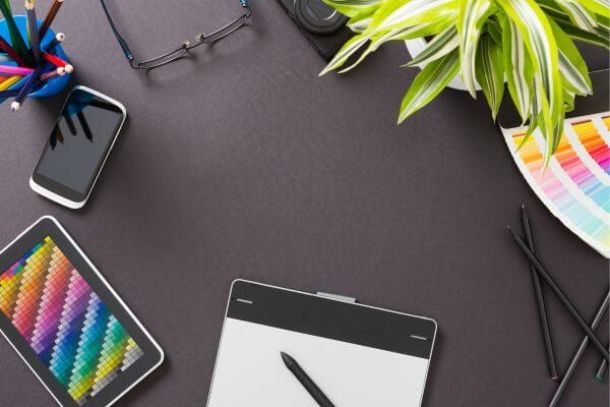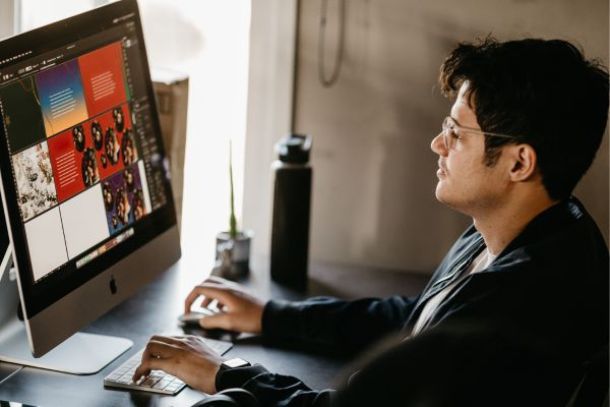Typography Trends in Modern Web Design
Typography Trends in Modern Web Design
Typography is an essential element of web design, playing a crucial role in how users perceive and interact with a website. The right typography can enhance readability, convey a brand’s personality, and create an aesthetically pleasing experience. As web design continues to evolve, so do the trends in typography. In this article, we will explore the latest typography trends in modern web design, discussing their impact and how to effectively incorporate them into your projects.
1. Variable Fonts: Flexibility and Creativity
Variable fonts have emerged as one of the most significant typography trends in recent years. Unlike traditional fonts that come in predefined weights and styles, variable fonts are a single file that includes multiple variations. This allows designers to adjust the weight, width, and other attributes dynamically, offering unparalleled flexibility.
With variable fonts, designers can create responsive typography that adapts seamlessly to different screen sizes and devices. This flexibility not only improves readability but also reduces the need to load multiple font files, enhancing website performance. Moreover, variable fonts enable designers to experiment with creative transitions and animations, adding a new dimension to web design.
For instance, a designer might use a variable font to gradually increase the weight of text as a user scrolls down a page, creating a subtle yet engaging visual effect. This trend is particularly useful for brands that want to maintain consistency across various digital platforms while still offering a personalized user experience.
2. Bold Typography: Making a Statement
In the world of modern web design, bold typography has become a powerful tool for making a statement. Bold fonts command attention and can effectively communicate the core message of a website without overwhelming the viewer with too much text.
Bold typography is often used in hero sections, headlines, and call-to-action buttons to create a strong visual hierarchy. This trend is especially prevalent in minimalist web design, where large, bold fonts are paired with ample white space to create a clean and impactful look.
Designers are also experimenting with bold typography by combining it with unconventional layouts and creative use of color. For example, overlaying bold text on a vibrant image or video background can create a striking visual effect that draws the user’s eye and reinforces the brand’s identity.
However, it’s important to use bold typography judiciously. Overusing bold fonts can lead to a cluttered and overwhelming design. The key is to strike a balance, using bold typography to highlight the most important elements of the design while maintaining overall harmony.
3. Serifs in Digital Design: A Classic Comeback
Serif fonts, traditionally associated with print media, have made a strong comeback in digital design. For years, sans-serif fonts dominated the web due to their clean and modern appearance, which was believed to be better suited for screens. However, with advancements in screen resolution and display technology, serif fonts have become increasingly popular in web design.
Serif fonts add a touch of elegance and sophistication to a website, making them ideal for brands that want to convey a sense of tradition, reliability, or luxury. They are particularly effective in editorial-style websites, fashion brands, and businesses that want to establish a strong, authoritative presence.
One of the reasons for the resurgence of serif fonts is their improved legibility on screens. Modern serifs are designed with digital readability in mind, offering a balance between style and functionality. Designers are now combining serif and sans-serif fonts to create contrast and depth in their typography, adding visual interest to their designs.
4. Custom Typefaces: A Unique Brand Identity
As brands strive to stand out in a crowded digital landscape, custom typefaces have become an increasingly popular trend in modern web design. A custom typeface is a font designed specifically for a brand, reflecting its unique personality and values.
Custom typefaces offer several advantages. First, they help reinforce brand identity by providing a distinctive visual element that is instantly recognizable. Second, they give brands more control over their typography, ensuring consistency across all digital and print materials. Finally, custom typefaces can be designed with specific use cases in mind, such as optimizing for legibility on screens or creating a cohesive look across different languages.
Brands like Google, Apple, and Netflix have all embraced custom typefaces as a way to differentiate themselves and create a more memorable user experience. For example, Google’s custom font, Google Sans, was designed to enhance legibility across its products while maintaining a consistent and modern aesthetic.
While custom typefaces require a significant investment of time and resources, they can pay off by establishing a strong and cohesive brand identity that resonates with users.
5. Mixing Typefaces: Creative Contrast
Mixing typefaces is a trend that allows designers to experiment with different font combinations to create visual contrast and hierarchy. By pairing fonts with distinct characteristics, designers can guide the user’s attention to specific areas of a website and create a more dynamic and engaging experience.
When mixing typefaces, it’s important to consider the contrast between the fonts. For example, combining a bold, modern sans-serif with a delicate, elegant serif can create a striking contrast that adds depth to the design. Similarly, pairing a script font with a geometric sans-serif can create a playful and approachable look.
The key to successfully mixing typefaces is to ensure that the fonts complement each other rather than clash. This involves paying attention to factors such as weight, style, and spacing. Additionally, designers should limit the number of typefaces used in a single design to avoid overwhelming the user and maintain a cohesive look.
6. Overlapping Text and Elements: Depth and Dimension
Overlapping text and elements is a trend that adds depth and dimension to web design, creating a sense of layering and movement. This technique involves placing text over images, graphics, or other text elements, allowing them to interact in a visually interesting way.
Overlapping text can be used to create a focal point, draw attention to specific content, or enhance the overall visual hierarchy of a page. For example, a headline might overlap a background image to create a bold, immersive experience that captures the user’s attention.
This trend is often combined with other design techniques, such as parallax scrolling or dynamic animations, to create a more interactive and engaging user experience. However, designers must be mindful of readability when using overlapping text. Ensuring sufficient contrast between the text and background elements is crucial to maintaining legibility.
7. Animated Typography: Bringing Text to Life
Animation has become an integral part of modern web design, and typography is no exception. Animated typography involves adding movement to text elements, such as transitions, scrolling effects, or interactive animations.
Animated typography can make a website more dynamic and engaging by adding a sense of playfulness or drama. For example, a headline might appear on the screen letter by letter, or text might change color as the user hovers over it. These subtle animations can enhance the user experience and make the content more memorable.
However, it’s important to use animated typography sparingly. Overloading a website with too many animations can distract users and slow down page loading times. The goal is to enhance the design without compromising usability or performance.
8. Minimalist Typography: Less is More
Minimalism continues to be a dominant trend in web design, and this extends to typography as well. Minimalist typography focuses on simplicity, using clean lines, ample white space, and a limited color palette to create a refined and elegant look.
In minimalist typography, every element serves a purpose. Designers often use a single typeface or a limited number of typefaces, relying on variations in weight and size to create hierarchy and emphasis. This approach helps to eliminate visual clutter and ensures that the content is the focal point of the design.
Minimalist typography is particularly effective in responsive design, as it adapts well to different screen sizes and devices. It also aligns with the growing emphasis on user experience (UX) design, where clarity and ease of use are paramount.
9. Handwritten and Script Fonts: Adding a Personal Touch
Handwritten and script fonts have gained popularity in modern web design as a way to add a personal and human touch to digital interfaces. These fonts evoke a sense of authenticity and individuality, making them ideal for brands that want to convey a friendly and approachable image.
Handwritten and script fonts are often used in logo design, headings, and call-to-action buttons to create a sense of warmth and personality. They can also be combined with more traditional fonts to create a balanced and visually appealing design.
However, designers must be careful when using handwritten and script fonts, as they can be challenging to read, especially in smaller sizes. It’s important to use these fonts sparingly and ensure that they complement the overall design rather than detract from it.
10. Responsive Typography: Adapting to Every Screen
As more users access websites on a variety of devices, responsive typography has become an essential aspect of modern web design. Responsive typography involves adjusting text size, line spacing, and other typographic elements based on the user’s screen size and device.
Responsive typography ensures that text remains readable and aesthetically pleasing, whether viewed on a large desktop monitor or a small smartphone screen. Designers achieve this by using relative units like percentages, ems, or rems, allowing the text to scale proportionally across different devices.
In addition to scaling, responsive typography also involves optimizing line length, leading, and spacing to enhance readability. By prioritizing responsive typography, designers can create a consistent and user-friendly experience across all devices.
Conclusion: Embracing Typography Trends in Modern Web Design
Typography is more than just a functional element of web design; it is a powerful tool for communication and visual expression. By staying informed about the latest typography trends and incorporating them into your design projects, you can create websites that are not only visually appealing but also engaging and effective.
From variable fonts to responsive typography, each trend offers unique opportunities to enhance your designs and connect with your audience. As you explore these trends, remember that the key to successful typography lies in balance and intention. Whether you’re making a bold statement with typography or adding a personal touch with handwritten fonts, your choices should align with the overall goals of the design and the message you want to convey.

